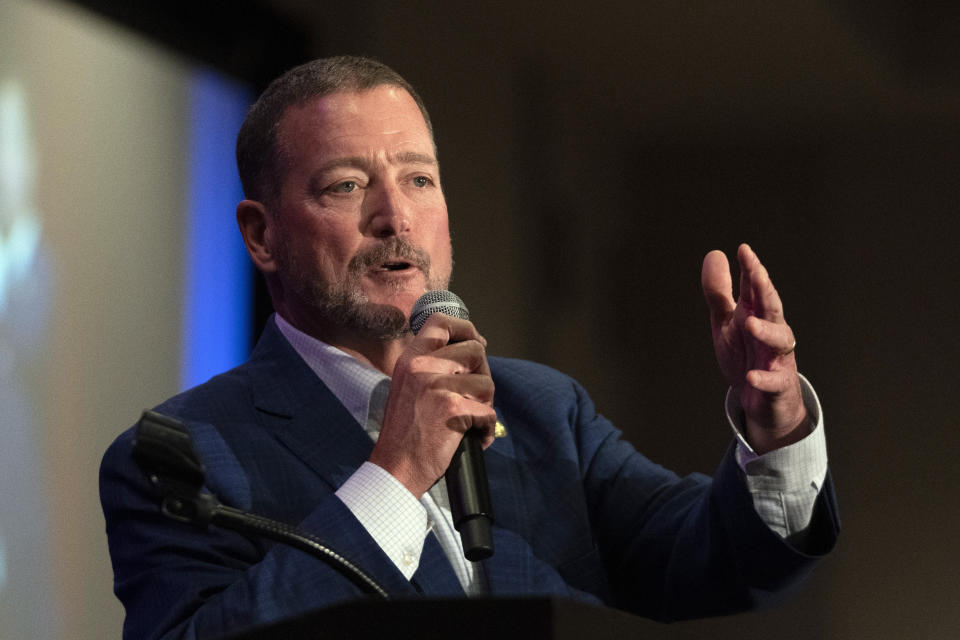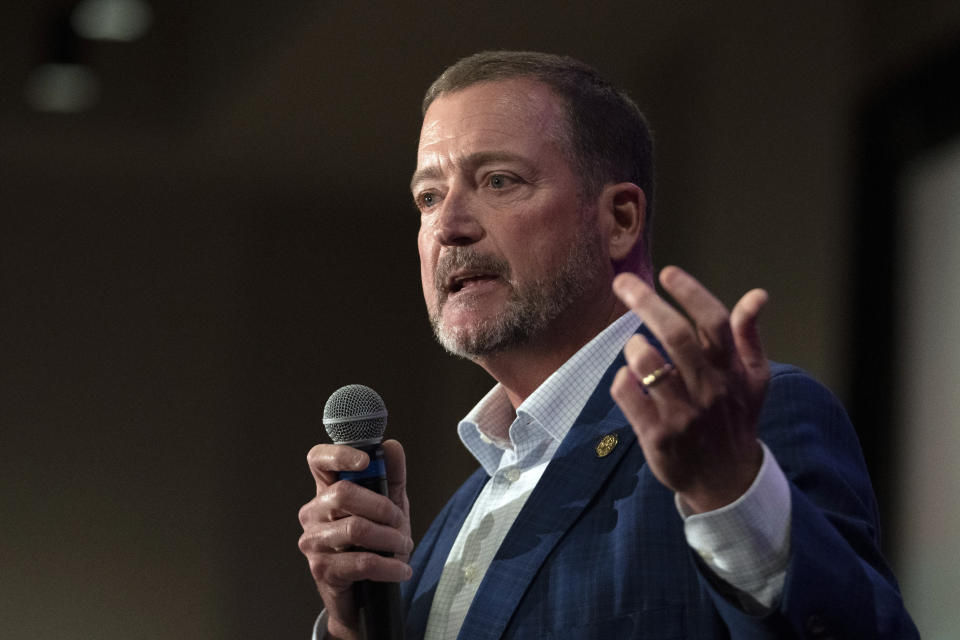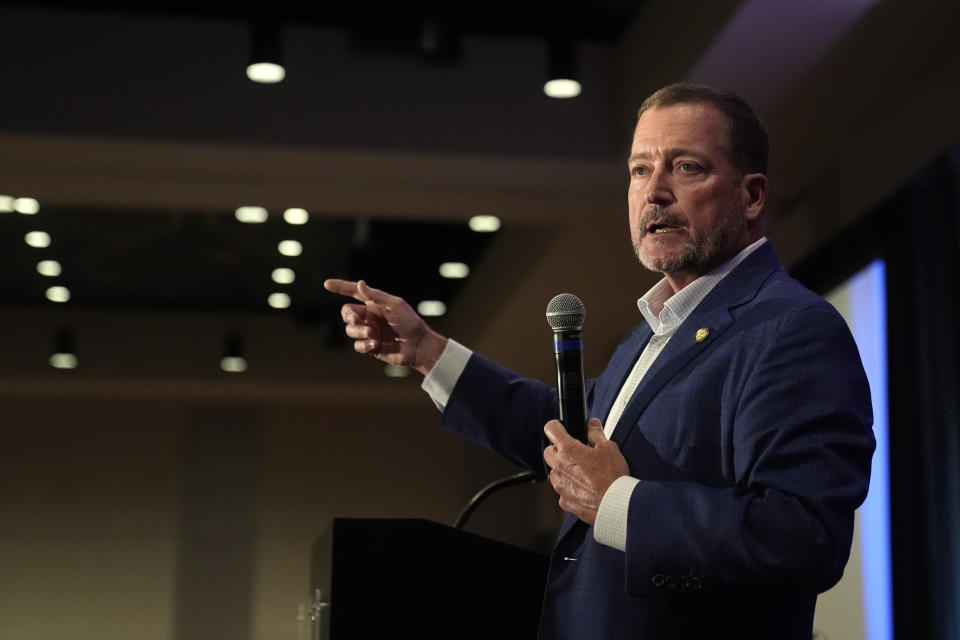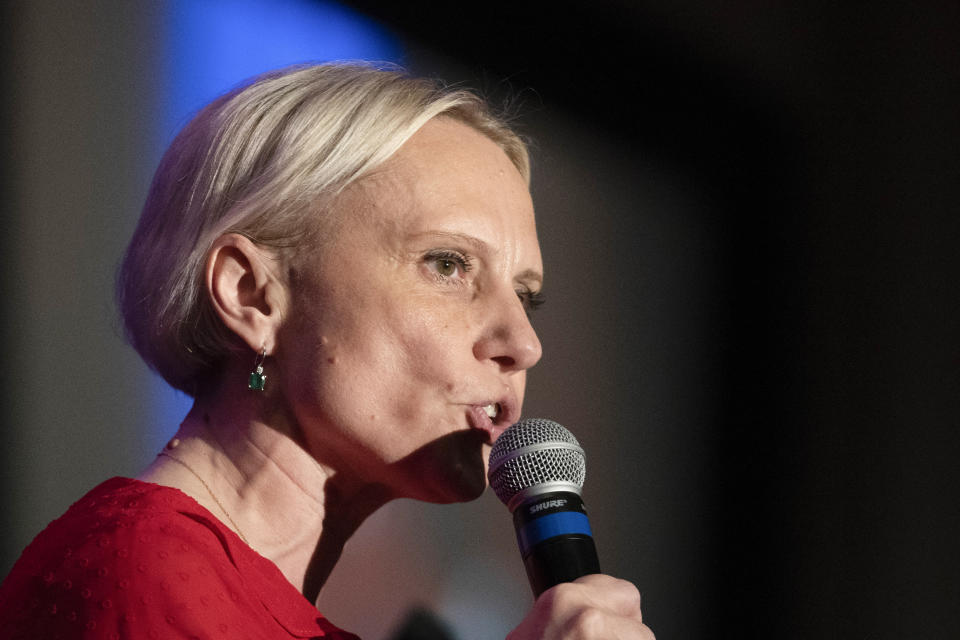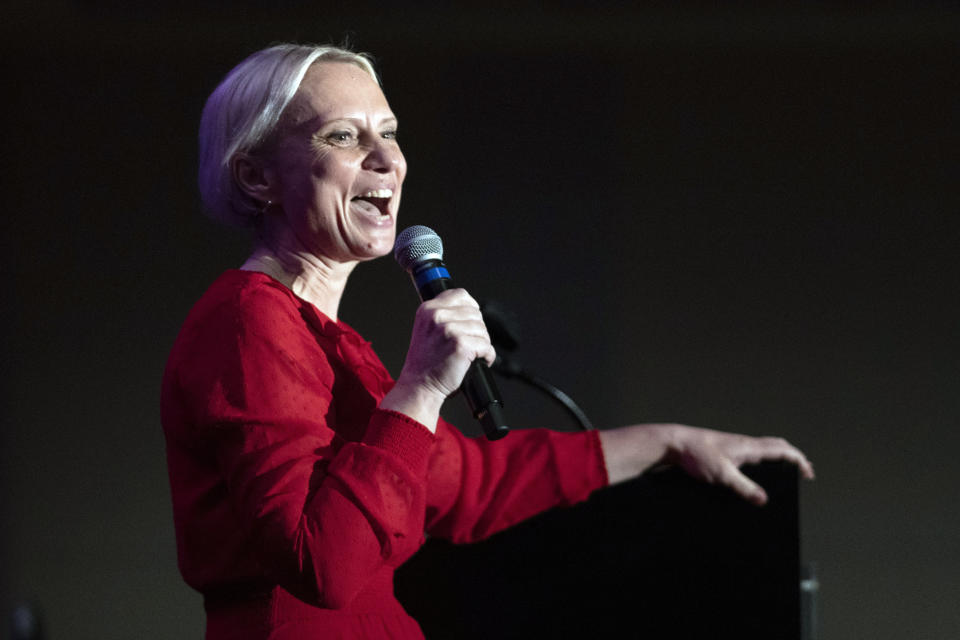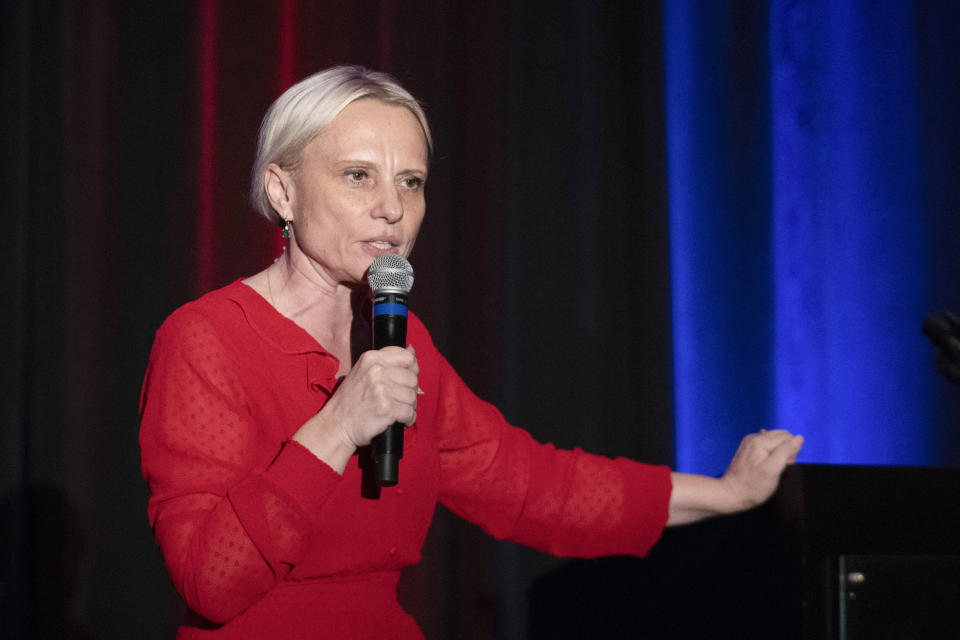AP Decision Notes: What to expect in Indiana's presidential and state primaries
- Oops!Something went wrong.Please try again later.
- Oops!Something went wrong.Please try again later.
- Oops!Something went wrong.Please try again later.
WASHINGTON (AP) — The race for the White House tops the ballot Tuesday in Indiana’s presidential and state primaries, but voters will also have to settle more competitive contests for governor, Congress and the state legislature.
President Joe Biden and former President Donald Trump already have enough delegates to secure their respective parties’ presidential nominations and have both won almost every primary and caucus by overwhelming margins. The presumptive nominees have nonetheless faced ongoing protest votes in recent contests that won’t upend their primary campaigns but have raised questions about voter discontent heading into the November general election.
Biden is the sole option in the Democratic primary, so Indiana voters won’t be able to cast their votes for another candidate or for “uncommitted.” In last week’s Pennsylvania primary, Biden won with about 88% of the vote, but write-in ballots comprised almost 6% of the vote, up from the roughly 2% to 3% cast for write-ins in the last three Democratic Pennsylvania presidential primaries. Progressive activists in the commonwealth organized a campaign to cast write-in votes for “uncommitted” in protest of the Biden administration’s position on the war in Gaza.
Trump is the only active candidate in the Republican primary, but the other option on the ballot, former United Nations Ambassador Nikki Haley, has continued to receive a sizable share of the vote in recent contests, despite suspending her campaign in early March. She received almost 17% of the vote in the April 23 Pennsylvania primary, which Trump still easily won with 83% of the vote.
Indiana is not expected to be competitive in the presidential election. Trump carried the state twice with 57% of the vote. In the last 21 presidential elections, only two Democrats have won Indiana: Lyndon Johnson in 1964 and Barack Obama in 2008
Also on Tuesday, Indiana voters will decide a crowded six-way Republican primary to replace term-limited GOP Gov. Eric Holcomb. The field features first-term U.S. Sen. Mike Braun, who has Trump’s backing, former state Commerce Secretary Brad Chambers, Lt. Gov. Suzanne Crouch, former state economic official Eric Doden, former state Attorney General Curtis Hill and conservative activist Jamie Reitenour.
With Braun running for governor, Republicans have coalesced behind U.S. Rep. Jim Banks to replace him in the U.S. Senate. His Democratic opponent in November will be either former state representative and trade association executive Marc Carmichael or psychologist Valerie McCray.
The most notable of the U.S. House races on the ballot Tuesday are competitive Republican primaries in the 3rd Congressional District, which Banks is giving up to run for Senate, as well as the 5th, 6th and 8th Districts.
Half of Indiana’s 50 state Senate seats and all 100 state House seats are also up for election this year.
Here’s a look at what to expect on Tuesday:
PRIMARY DAY
Indiana’s presidential and state primaries will be held Tuesday. The last polls close at 7 p.m. ET, although most polls close at 6 p.m. ET. Indiana is in both the Eastern and the Central time zones.
WHAT’S ON THE BALLOT
The Associated Press will report vote totals for the Republican presidential primary, as well as 57 contested primaries for governor, U.S. Senate, U.S. House, state Senate and state House. Trump and Haley will both appear on the Republican presidential ballot. Vote totals will not be reported for the Democratic presidential primary, in which Biden is running uncontested. There is no “uncommitted” or write-in option on either ballot.
WHO GETS TO VOTE
Indiana has an open primary system, which means any registered voter may participate in either party’s primary.
DELEGATE ALLOCATION RULES
Indiana’s 79 pledged Democratic delegates are allocated according to the national party’s standard rules. Since Biden is the only option on the ballot, he will win all 79 delegates.
There are 58 delegates at stake in the Republican presidential primary. Thirty-eight delegates will be awarded to the winner of the statewide vote. Twenty-seven delegates will be allocated according to the vote in each of the state’s nine congressional districts. The top vote-getter in a congressional district will be awarded three delegates from that district.
DECISION NOTES
In the Democratic presidential primary, Biden is the only option on the ballot and will be declared the winner once all the polls have closed in the state. In the Republican primary, Trump is the expected winner, as he is the only active candidate on the ballot. The first indications that he is winning statewide on a level consistent with the overwhelming margins seen in most other contests held this year may be sufficient to declare him the winner. If there is an anti-Trump protest vote in favor of Haley, it would likely be anchored in the state’s most Democratic-friendly counties of Marion, the home of Indianapolis, and Lake, where Gary is located. It may also do well in the three other counties Biden carried in 2020: St. Joseph (home of South Bend), Tippecanoe (home of Lafayette) and Monroe (home of Bloomington).
In the race for governor, Braun has the most recent history of winning a high-profile statewide Republican primary with his 2018 win over then-U.S. Reps. Todd Rokita and Luke Messer. In that contest, Braun had an 11-percentage-point margin of victory over Rokita, though far below the 50% mark. Braun carried about two-thirds of the state’s 92 counties, including the most populous county of Marion. Rokita narrowly carried Lake County and parts of western Indiana. Messer carried much of southeastern Indiana. Trump carried almost every county in the contested 2016 presidential primary, as well as in two general elections, so his endorsement will likely give Braun a boost.
The AP does not make projections and will declare a winner only when it’s determined there is no scenario that would allow the trailing candidates to close the gap. If a race has not been called, the AP will continue to cover any newsworthy developments, such as candidate concessions or declarations of victory. In doing so, the AP will make clear that it has not yet declared a winner and explain why.
There are no automatic recounts in Indiana, but the losing candidate may request and pay for a recount regardless of the vote margin. The AP may declare a winner in a race that is subject to a recount if it can determine the lead is too large for a recount or legal challenge to change the outcome.
WHAT DO TURNOUT AND ADVANCE VOTE LOOK LIKE
As of September, there were about 4.7 million registered voters in Indiana. The state does not register voters by party.
In the 2022 U.S. Senate primaries, turnout was 4% of about 4.7 million registered voters in the Democratic primary and 8% in the Republican primary. About 27% of votes in that election were cast before Election Day.
As of Thursday, more than 137,000 ballots had been cast before Election Day, about 74% in person and about 26% by mail. The state does not break down the advance vote by party, although we do know that almost two-thirds of the absentee ballots requested were for the Republican primary.
HOW LONG DOES VOTE-COUNTING USUALLY TAKE?
In the 2022 congressional primaries, the AP first reported results at about 6:11 p.m. ET, or 11 minutes after polls closed in most of the state and 49 minutes before the last polls closed. The election night tabulation ended at 10:22 p.m. ET with about 99.9% of total votes counted.
ARE WE THERE YET?
As of Tuesday, there will be 69 days until the Republican National Convention in Milwaukee, 104 days until the Democratic National Convention in Chicago and 182 until the November general election.
___
Follow the AP's coverage of the 2024 election at https://apnews.com/hub/election-2024.
